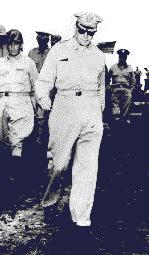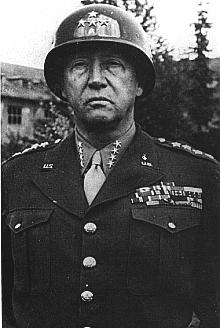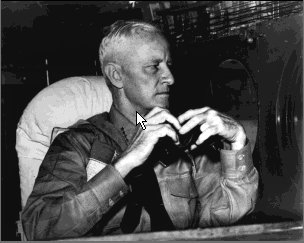STUDY GUIDE
FOR
WORLD WAR II

*********************************************

Map Test Learning Objectives
STUDY GUIDE
FOR
WORLD WAR II

*********************************************

Map Test Learning Objectives
On a map test administered in class with Unit Exam #1 you will be required
to locate twenty of the following. Sixteen
correct is a passing grade on this test. The list of places
includes:
| England | Atlantic Ocean |
| Ireland | North Sea |
| Spain | Mediterranean Sea |
| Portugal | Suez Canal |
| France | Normandy |
| Holland | Rhine River |
| Belgium | Crete |
| Norway | Sicily |
| Sweden | Morocco |
| Finland | Algeria |
| Denmark | Libya |
| Austria | Italy |
| Germany | Corsica |
| Switzerland | Greece |
| Poland | Soviet Union |
| Czechoslovakia | Estonia |
| Hungary | Latvia |
| Romania | Lithuania |
| Bulgaria | Panama Canal |
| Pearl Harbor | Midway |
| Wake | Gilbert Islands |
| Marshall Islands | Caroline Islands |
| Samoa | New Caldonia |
| New Guinea | Australia |
| New Zealand | Solomon Islands |
| Netherland's East indies | Philippines |
| French Indochina | Okinawa |
| Formosa | Japan |
| Korea | Manchuria |
| Iwo Jima | Guam |
| Aleutian islands | Alaska |
| California | Canada |
***************************************************************************************

UNIT 1 LEARNING OBJECTIVES
Part A
1. Explain how Germany could defeat Poland so easily.
(11)
2. Discuss the German plan of attack on Poland.
(11)
3. Name Germany's partner in the Polish aggression.
(11)
4. Describe the exploits of the "Graf Spee." (12)
5. Explain Russian actions after Poland. (12)
6. Explain why France did NOT attack Germany in
1939. (13)
7. Discuss Norway's importance to Germany in 1939-40.
(14)
8. Describe the conquest of Denmark in 1940. (14)
9. Describe the German invasion of Norway in 1940.
(14)
10. Discuss the British response to the Norway invasion
in 1940. (14)
11. Name Chamberlain's successor. (14-15)
12. Explain the situation in Belgium & Holland before
1940. (16)
13. Explain the von Schlieffen Plan of WWI & von
Manstein's change. (16)
14. Discuss French strategy against Germany in 1940.
(16)
15. Explain the German invasion of Belgium. (16)
16. Discuss the German invasion of Holland. (16)
17. Detail the events leading to the fall of France.
(16)
18. Discuss the British evacuation at Dunkirk. (17)
Part B
1. Explain the U.S. attitude toward war in summer
1940. (21)
2. Discuss FDR's pro-Allies feeling. (21)
3. Describe FDR's war policy from Sept 1939 to
Sept 1940. (21)
4. Describe the disposition of the French Navy
in 1940. (21)
5. Explain the critical technological aspects
of the Battle of Britain. (21)
6. Describe the Germany strategy in the Battle
of Britain. (21)
7. Explain the British strategy to combat U-Boats.
(22)
8. Discuss FDR's Atlantic strategy in 1941. (22)
9. Detail the German plans for the Balkans. (22)
10. Explain the problems of desert warfare. (23)
11. Discuss the British plan for Africa in 1940-41. (23)
12. Explain how the British plans for Africa were upset.
(23)
13. Discuss the German conquest of Yugoslavia. (24)
14. Discuss the German conquest of Greece. (25)
15. Explain the campaign for Crete. (25)
16. Discuss the British policy in the Middle East in
1941. (27)
17. Discuss Erwin Rommel's career through 1941. (27)
18. Describe Hess' attempt to make peace with Britain.
(29)
19. Explain why Hitler invaded Russia against his generals'
advice. (29)
20. Describe the problems encountered by the Germans
in Russia. (29)
21. Explain the tactics used by the Germans in invading
Russia. (30)
22. Discuss how the German invasion of Russia slowed
down. (31)
23. Describe Auchinlick's weaknesses as Middle East commander.
(32)
24. Explain Erwin Rommel's tactics in Africa. (32)
25. Discuss the siege of Leningrad. (33)
26. Discuss the German invasion of southern Russia. (34)
*********************************************************************************

UNIT 2 LEARNING OBJECTIVES
Part A
1. Discuss Japanese expansion from 1894 to 1940.
(35)
2. Explain Admiral Yamamoto's ideas concerning
the U.S. (37)
3. Explain Yamamoto's plan for the attack on Pearl
Harbor. (37)
4. Describe Douglas MacArthur's pre-World War
II Army career. (38)
5. Name CINCPAC Fleet in 1941. (38)
6. Name the Commanding General of the Hawaiian
Department. (39)
7. Explain the problems facing Kimmel and Short.
(39)
8. Describe Colonel Bratton's role in Pearl Harbor.
(39)
9. Describe the two events that should have warned
the U.S. of an impending attack on Pearl Harbor on Dec. 7, 1941. (40)
10. Explain how the outboard battleships at Pearl were
sunk. (41)
11. Explain why U.S. planes in Hawaii were such easy
targets. (41)
12. Describe the American people's reaction to Pearl
Harbor. (42)
13. Describe the situation in the Philippines in Dec
1941. (42)
14. Discuss the pre-World War II career of Dwight Eisenhower.
(43)
15. Explain the U.S. strategy in D.C. regarding the Far
East. (44)
16. Describe the situation of MacArthur's men in early
1942. (44)
17. Name the commander who surrendered Corregidor. (44)
18. Explain the problems Auchinleck faced in North Africa.
(45)
19. Describe Rommel's tactics in January 1942. (45)
20. Explain how Auchinleck stopped Rommel's summer offensive.
(45)
21. Describe Bernard Montgomery's career. (46)
22. Describe the Battle of El Alamain. (47)
Part B
1. Explain the Japanese strategy in the Pacific
in early 1942. (48)
2. Describe the short-term and long-term results
of Doolittle's Raid.(48)
3. Describe the results of the Battle of the Coral
Sea. (48)
4. Explain the strategy of the Battle of Midway.
(48)
5. Describe the results of the Battle of Midway.
(48)
6. Name the originator of the Tulagi-Guadalcanal
Operation. (49)
7. Name the USN & USMC commanders for Tulagi-Guadalcanal.
(49)
8. Explain the strategic importance of Guadalcanal.
(49)
9. Explain the coast watcher system. (49)
10. Explain the Tulagi campaign. (50)
11. Describe the initial invasion of Guadalcanal. (50)
12. Discuss how Henderson Field was captured. (50)
13. Discuss the results on the Marines of Fletcher's
decision to withdraw his carriers from Guadalcanal. (50)
14. Describe the Battle of Savo Island. (50)
15. Explain Vandergrift's strategy after Savo Island.
(51)
16. Describe the significance of the Goettge patrol.
(51)
17. Describe Colonel Ichiki's attack on Guadalcanal.
(51)
18. Explain the Japanese strategic response to the Guadalcanal
invasion. (52)
19. Describe the climatic battle for Henderson Field.
(52)
20. Explain the process of Japanese reinforcement of
Guadalcanal. (55)
21. Discuss the naval battle off Cape Esperance. (55)
22. Explain the Japanese strategy on New Guinea. (57)
23. Discuss the situation of the Japanese on New Guinea.
(57)
24. Name in the new US Navy commander around Guadalcanal.
(58)
25. Explain how General Maruyamaís banzai charges ended.
(58)
26. Describe the Battle of Santa Cruz. (60)
27. Describe the Battle of Savo Island. (60)
28. Describe the results of Guadalcanal. (60)
****************************************************************************************

UNIT 3 LEARNING OBJECTIVES
Part A
1. Explain German strategy in Russia in Fall 1942.
(53)
2. Describe the three US sea routes to Russia.
(53)
3. List Stalin's principal demand in 1942. (53)
4. Discuss the Allies' response to Stalin's demand.
(53)
5. Name the commander of the ETO. (53)
6. Discuss Eisenhower's goals for Allied cooperation.
(53)
7. Discuss the goals of Operation Torch. (53)
8. Describe the plans for Operation Torch. (61)
9. Describe the actual Operation Torch invasion.
(61)
10. Explain the results of Eisenhower's deal with Darlan.
(61)
11. Describe the beginning of the Manhattan Project.
(62)
12. Explain the German atomic bomb project. (62)
13. Describe the Summer 1942 situation in Russia. (63)
14. Explain the Battle of Stalingrad. (63)
15. Describe Hitler's orders to Paulus at Stalingrad.
(63)
16. Discuss the Casablanca Conference. (64)
17. Explain the results of the unconditional surrender
doctrine. (64)
18. Describe the situation in North Africa in Spring
1943. (65)
19. Explain the results of Kasserine Pass. (65)
20. Describe the end of the campaign in North Africa.
(65)
21. List the results of the North Africa campaign. (65)
22. Describe the major priority of the Allied Powers
mentioned at Casablanca. (66)
23. Explain the U-Boat campaign in the early months of
the war for the US. (66)
24. Describe the Allied challenge to control the Atlantic.
(66)
25. Discuss the problems faced by the Allies in invading
Sicily. (67)
26. Explain the plans of the Sicily operation. (67)
27. Discuss the actual campaign to take Sicily. (67)
28. Describe the fall of Mussolini. (67)
29. Discuss the invasion of Italy. (67)
30. Explain the German response to the Allied invasion
of Italy. (67)
Part B
1. Discuss the Eastern Front situation in Summer
1943. (68)
2. Explain the German strategy after Kurst. (68)
3. Discuss the situation in the China, Burma,
India theater. (69)
4. Describe the American strategy in the Pacific
in Summer 1943. (70)
5. Explain MacArthur's advance north in Summer
1943. (71)
6. Describe the Battle of Bougainville. (72)
7. Describe the differences between the Southwest
Pacific & Central Pacific Campaigns. (71)
8. Describe the Tarawa defenses. (71)
9. Discuss the attack on Tarawa. (71)
10. Explain the Tarawa mop-up. (74)
11. Describe the lessons of the Tarawa campaign. (74)
12. Discuss the results of the diplomatic conferences
of 1943. (75)
13. Explain the strategy of the New Britain campaign.
(77)
14. Explain the early 1944 Pacific campaign. (78-9)
15. Discuss the chief reason for invading Italy. (82)
16. Describe the Allied campaign to capture Rome. (82)
17. Explain the reasons and results of the Anzio landing.
(82)
18. Explain the problems at Monte Cassino. (82-3)
19. Discuss the Allied bombing campaign over Germany.
(84)
20. Explain the Russian campaign in 1943-44. (85-7)
***************************************************************************************

UNIT 4 LEARNING OBJECTIVES
Part A
1. Explain the Allies' differences concerning preparation
for D-Day. (88)
2. Describe the command background for D-Day operations.
(88)
3. Discuss the D-Day landing plan. (88)
4. Discuss the differences among German commanders
for a D-Day response. (88)
5. Describe the actual D-Day landing at Normandy.
(89)
6. Discuss the German problems with an effective
defense. (89)
7. Explain the Battle of Caen. (90)
8. Describe the Allied breakout from Normandy.
(90)
9. Describe the Spring 1944 campaign in the Central
Pacific. (91)
10. Explain the Saipan invasion. (92 & 94)
11. Describe the naval Battle of Saipan. (93)
12. Describe the Guam campaign. (93)
13. Explain the July 20, 1944 attempt on Hitler's life.
(95)
14. Describe the solution for the Normandy breakout.
(98)
15. Discuss the role of the French Resistance. (100)
16. Explain the role of Patton's Third Army. (101)
17. Describe the Mortain counterattack by the Germans.
(101)
18. Describe the invasion of southern France. (103)
19. Explain the liberation of Paris. (103)
20. Describe the results of the Pearl Harbor strategy
meeting. (104)
21. Discuss the Allied drive for the Phine. (105)
22. Explain Operation Market Garden. (106)
23. Describe the invasion of Leyte. (108)
24. Explain the naval Battle of Leyte Gulf. (109)
25. Explain the problems with taking Leyte. (110)
Part B
1. Describe the Ardennes counteroffensive planning.
(112)
2. Discuss the actual Ardennes attack. (113)
3. Describe the Battle of the Bulge. (113)
4. Explain the final battle for Italy. (115)
5. Describe the murder of Mussolini. (116)
6. Describe the Soviet offensive of 1945. (117)
7. Discuss the results of the Yalta Conference.
(118)
8. Describe the liberation of the Philippines.
(119)
9. Discuss the plans for the attack & defense
of Iwo Jima. (120)
10. Describe the Battle of Iwo Jima. (120)
11. Explain the preparations for the invasion of Okinawa.
(121)
12. Describe the battle for Okinawa. (122)
13. Describe the naval battle for Okinawa. (122)
14. Explain the significance of FDR's death. (122)
15. Describe the Allied drive into Germany. (123)
16. Explain Eisenhower's plans for the drive into Germany.
(123)
17. Explain the plans to take Berlin. (123)
18. Discuss the death of Hitler & its significance.
(124)
19. Describe the German surrender. (126)
20. Explain the impact of US submarine war against Japan.
(128)
21. Name the leader of the A-bomb discovery. (129)
22. Explain the significance of the Potsdam Conference.
(130)
23. Describe the events of Hiroshima. (131)
24. Describe the events of Nagasaki. (132)
25. Describe the surrender of Japan. (132)